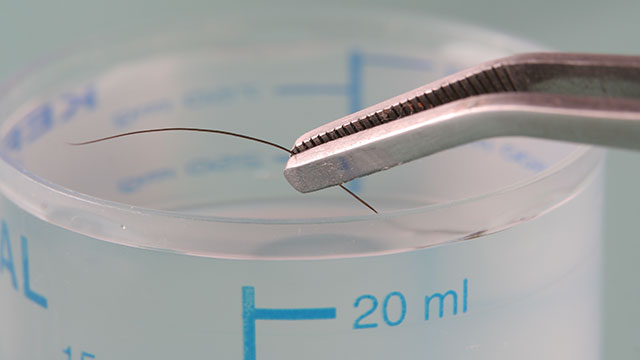Microwave Digestion: A Reliable Method
Instruments become more flexible and practical for lab users

To study heavy metals in a sample, scientists often use microwave digestion as a sample preparation technique. This technique makes an excellent choice; as a team of scientists from the Universiti Kebangsaan Malaysia recently noted, “Microwave is the most reliable sample digestion method.”1 These scientists also showed that some simple methods—such as an acid digestion—make microwave digestion an effective technique when analyzing elements at trace levels in human hair and nails. In fact, microwave-digestion techniques help scientists study the components of many sample types.
Increasing expectations of the results, however, must be balanced with ease of use, and that puts some pressure on manufacturers. Here, Reynhardt Klopper, technical sales representative for analytical and synthetic chemistry at Anton Paar (Houston, TX), discusses some of the key issues. As he explains, “Although microwave-digestion instruments have evolved significantly over the last 25 years, there are still a few challenges that vendors are working on overcoming.”
Drilling down
One of those challenges is achieving the appropriate detection limits. In many cases, analytical scientists must measure elements to lower levels than were required in the past. These requirements can go “down to parts per trillion for labs servicing the electronics and semiconductor industries,” Klopper says. “Thus, a frequent request from microwave users is to have the ability to process large sample masses, generally higher than one gram of sample per digestion vessel.”
Starting with a larger sample makes it easier to consistently measure components that are at a lower concentration. Nonetheless, working with larger samples creates challenges, including controlling the temperature and pressure. “Microwave vendors are coming up with novel solutions to handle these challenges,” Klopper explains. These solutions include smart hardware and software features that proactively apply the appropriate microwave power and vessel design features that can safely handle high temperature and pressure conditions.
Practical processing
Being the “most reliable sample digestion method” won’t be enough if the technology doesn’t meet the needs of a lab. As Klopper says, “A major challenge for microwave digesters to deliver on is flexibility and practicality for the lab user.”
For instance, a scientist might expect a microwave digester that can process multiple types of samples in the same batch or run. Plus, that device should not take up any more lab space than necessary. While meeting those expectations, a microwave digester should also offer “intuitive operation coupled with low consumable and running costs,” Klopper points outs. “Microwave digesters are no longer seen as niche or specialized but rather routine instruments which should be integrated easily into existing lab workflows without the requirement for intense training or elaborate operating procedures.”
Options to explore
In looking for a microwave digester, several features should be considered, and they can be found in existing platforms. The key one is flexibility. This can include the ability to handle samples in a variety of matrices.
In addition, the possible size of the sample matters. As mentioned above, some processes involving low-level components of interest need samples of at least 1 gram. Some platforms on the market go even higher—up to, say, 3 grams. Accurately and consistently processing samples with microwave digestion still depends on some analytical expertise and experimentation. With improvements in the platforms, however, a scientist should expect the technology itself to handle more of the work, no matter how a sample is processed.
References
1. Ishak, I. et al. Comparison of digestion methods for the determination of trace elements and heavy metals in human hair and nails. Malays. J. Med. Sci. 22:11–20. 2015.
For additional resources on microwave digesters, including useful articles and a list of manufacturers, visit www.labmanager.com/microwave-digesters
